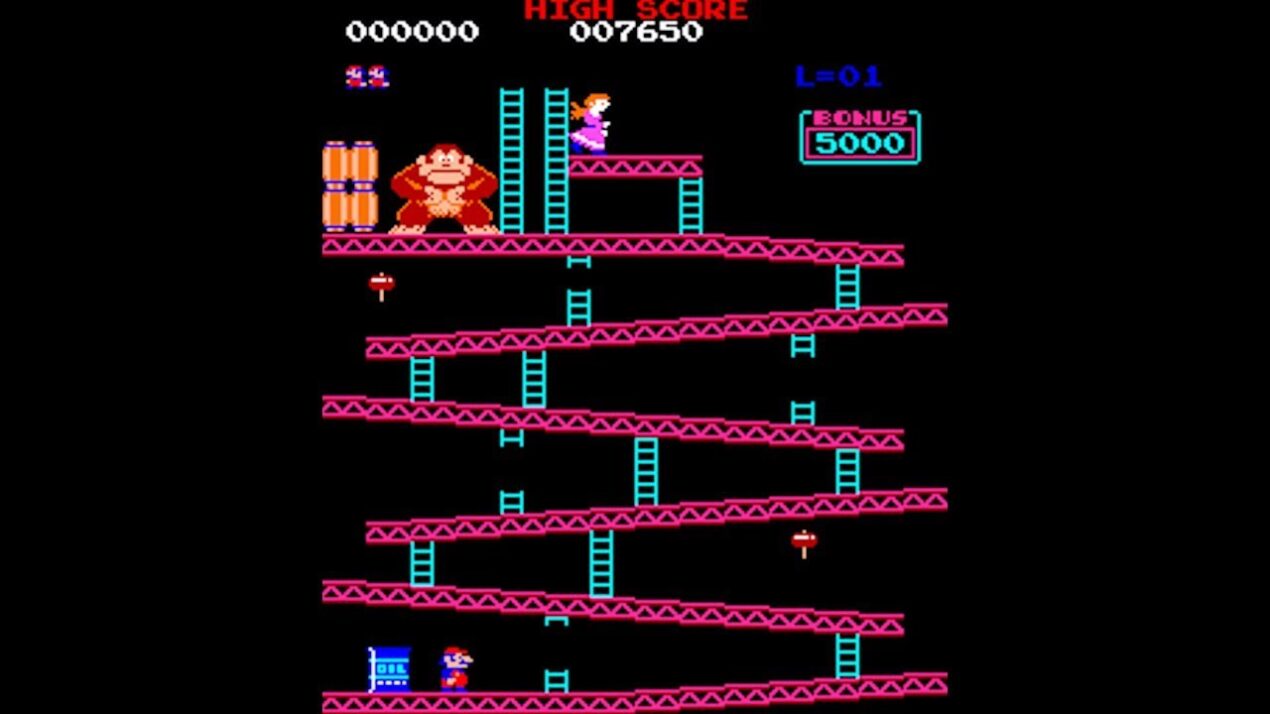Everyone who is even familiar with video games period knows about Nintendo’s major hit video game Donkey Kong released back in 1981. It was one of the major pioneers of the platformer genre and was the 2nd most popular arcade game of the early 80s right behind Pac-Man. Designed by the legendary Shigeru Miyamoto at the very young age of 17. Donkey Kong which was originally designed to be a game based on the Popeye cartoons of early 20th century (Miyamoto did design a Popeye game a year later along with Donkey Kong Jr.) stars a carpenter named Jumpman (later Mario) who chases a wild gorilla named Donkey Kong in a series on obstacle courses while holding the damsel in distress Pauline captive.
At the time when most arcade games were either shooters or maze games Donkey Kong as a breath of fresh air. No other game at the time had you climbing on construction sites, leaping over barrels, and then smashing them with a huge mallet. The way the levels of Donkey Kong work is each loop becomes more lengthy and more difficult overall. On loop 1 you only have 3 screens to complete. Loop 2 you get 4 screens to finish. Loop 3 you get 5 screens. The hardest difficulty will be on Loop 5 with the barrels, pies, flames, and trampolines moving extremely fast. After that the stages in the loop’s order repeats endlessly. (so they say…) If you are that good by the time you reach the 22nd loop you will automatically lose a life repeatedly 4 seconds later because of the extremely small timer. That is known to be Donkey Kong’s kill screen right there.
So why does a kill screen happen in Donkey Kong? Long story short it is an early 8-bit video game with a limited amount of numbers for coding. Since this technically an arcade game you keep playing endlessly for score so down the line a glitch will eventually show up. Keep in mind Shigeru Miyamoto probably wasn’t expecting anyone to last long in Donkey Kong for hours back in 1981 but as the game grew in popularity over the years there has been many record breaking scores from the most hardcore DK players like Billy Mitchell and Steve Wiebe.
Awhile back someone who goes under the name “Andrew G” discovered a ladder glitch where you simply climb all the way up to the top of the screen in mid air. Despite this nobody was able to beat Loop 22 until this Youtuber who has a channel called Kosmic tried that ladder glitch and miraculously beat the infamous level with the kill screen.
To do this involved a trick that requires players to perfectly input a ladder glitch to levitate Mario to the top of the barrel stage, which the Kosmic has stated requires the “player to be too perfect”, and needs them to enter the glitch perfectly 90 times to successfully beat the stage. However, there is also the issue of RNG with Kosmic admitting that it would require players to get extremely lucky to extend the timer beyond the standard 4 seconds .To be ore specific, players would need to get Donkey Kong to delay throwing the first barrel, which is a one-in-three chance before having him enact a slightly longer delay, that Kosmic estimates has a 1 in 32 odds of happening.Kosmic used frame advance and an old save file on an emulator to show this working in theory and he reached what he calls “the true kill screen”, which is in fact the rivet stage at level 22-6.
Watch the video below and see how it was done. It will definitely blow your mind. Not even Billy Mitchell accomplished this!
David Medina is a hardcore gamer and Japanese import collector owning dozens of systems and games from Famicom to Nintendo Switch. He has an active YouTube channel called "The Karnov Jr Show" and posts retro gaming content there weekly showing off collections, random store tours, and gameplay clips.


